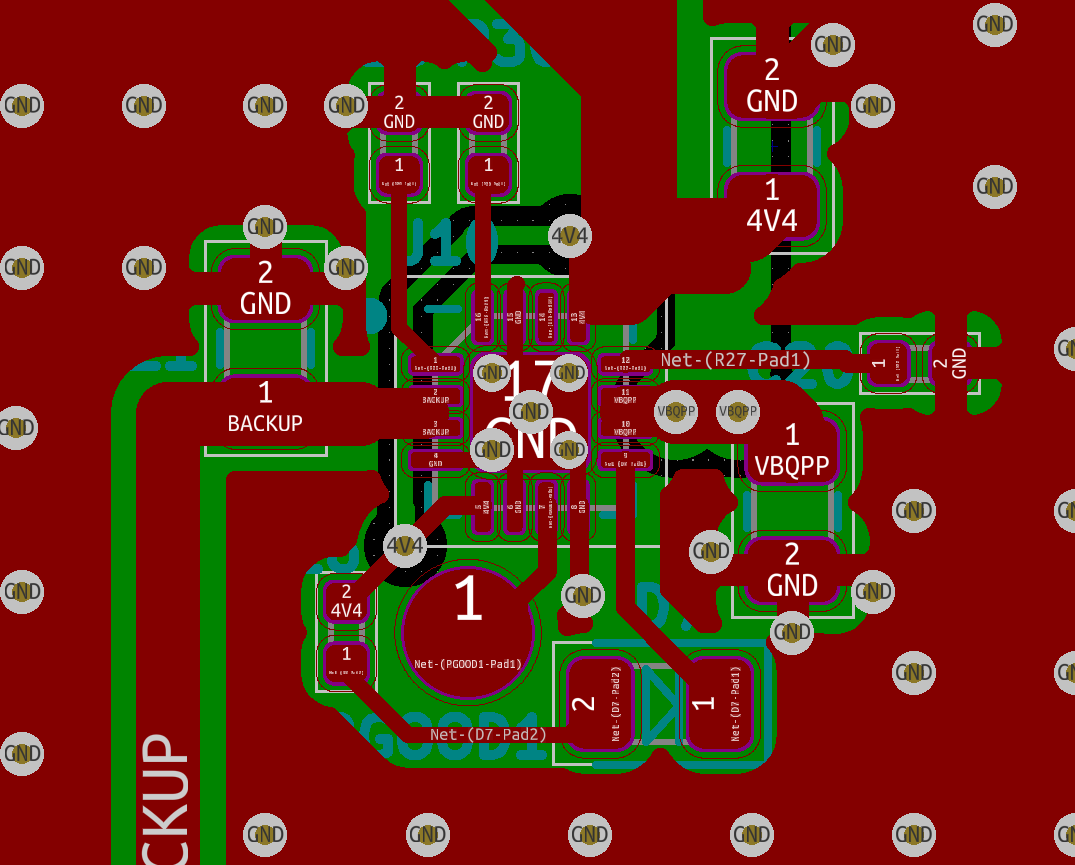Hello,
We have a system design with BQ24079 that is as follows:
- input from a 4.4V buck regulator
- output to a GSM/GPS module and 3V3 buck regulator for a STM32H7 MCU
- A 1000 mAh Li-Ion battery connected to battery port
Please review the design, especially the layout. Also there is some issue in the MCU part, where it gets damaged and creates a short, which damages this chip where it gets quite hot. Any suggestions on how to handle this?
Regards, Prithvi



